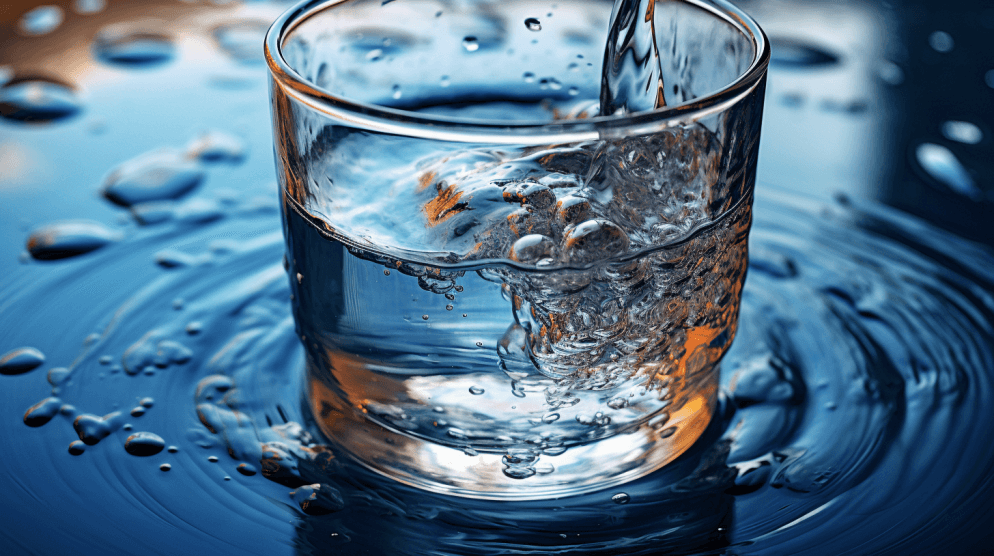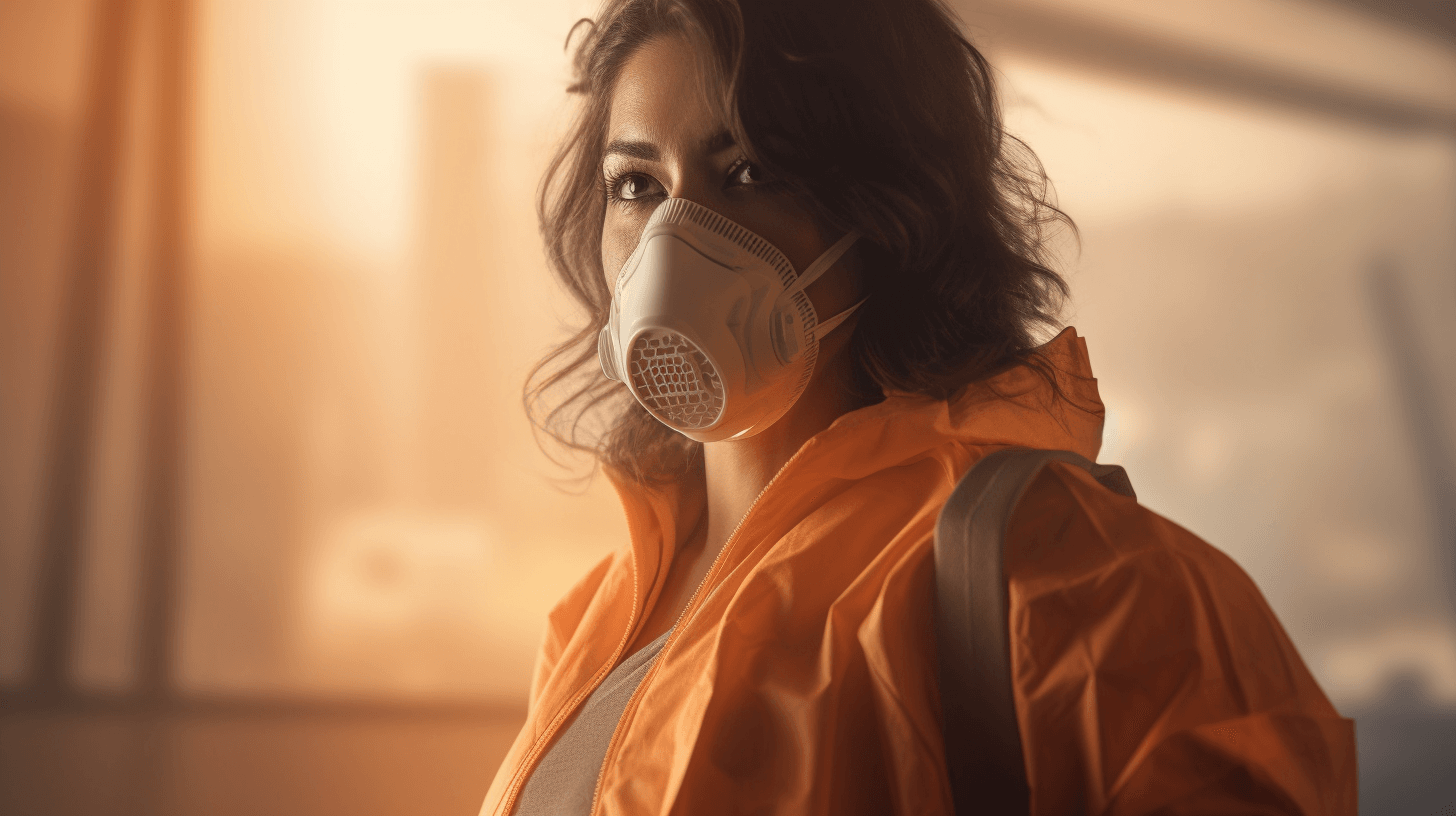🌊 How Plenny Can One Water Filter Do? 💧🚰
Lead, bacteria, an’ PFAS stay some of da junk showin’ up in drinkin’ watah. Ova da past few years, we wen’ see plenny watah safety troubles poppin’ up in several cities, li’k Baltimore, Flint, Mich., Jackson, Miss., an’ Newark, N.J., weah lead o’ bacteria wen’ leach into da tap watah, an’ people had fo’ use bottled watah o’ boil dey tap watah fo’ kill off da pathogens. 😱💧💥
In Wilmington, N.C., dey wen’ detect high levels of perfluoroalkyl an’ polyfluoroalkyl substances, chemicals we know as PFAS, in da local watasheed. PFAS get links to plenny health issues, li’k cancer, liver damage, an’ problems wit’ fertility. The Environmental Protection Agency proposed new regulations in March fo’ crackdown on da levels of six kine PFAS in drinkin’ watah, droppin’ da allowed detectable amounts. (You can get exposed to PFAS not jus’ from drinkin’ watah, but from stuff li’k food wrappers, cookin’ pans, an’ waterproof clothing too. But it’s still good fo’ try limit yo’ contact as much as you can.) 🚫🌊🚰
Wit’ all dese tingz happenin’, we gotta wondeh how safe da watah supply stay in da United States, an’ if we need extra filtration steps even if we no stay in one place wit’ one crisis. An’ if so, wea we goin’ find home watah filters dat goin’ help? 🤔🚰💦
Problems wit’ da system 🚫💧 Plenny people wen’ talk ’bout how importan’ watah sanitation stay, an’ how it wen’ help fo’ drop da death rate from diseases wen’ come from da watah. Da Safe Drinkin’ Watah Act of 1974 wen’ set da standards fo’ watah safety, an’ da Environmental Protection Agency (E.P.A.) get da powah fo’ control da amounts of metals, bacteria, pesticides, an’ oddah harmful stuff dat can be in da watah. Da state agencies watch da watah treatment plants fo’ make shuah dey stay following da law, an’ if dey see any problems, dey gotta let da people know within 24 hours. (If you get one private well, you gotta take care of yo’ own watah an’ make shuah it stay free from junk.) 🏭💧🔬
But aftah we wen’ make da Safe Drinkin’ Watah Act, we wen’ see oddah issues wit’ da watah too. Fo’ example, mos’ watah treatment plants no set up fo’ remove da new kindz of junk, li’k PFAS, pharmaceutical drugs, an’ chemicals dat mess wit’ yo’ hormones, said Detlef Knappe, one professor of civil, construction, an’ environmental engineering at North Carolina State University. He wen’ be one of da first guys fo’ talk ’bout da PFAS problem in Wilmington. 💔🌿🔬
One oddah concern stay if we settin’ da standards at da right speed based on what we know ’bout da science of our watah, said David Cwiertny, one professor of civil an’ environmental engineering at da University of Iowa. He wen’ use da example of nitrate, one pollutant dat come from agriculture an’ can get into da watah supply in Des Moines. Da local watah treatment plant try fo’ remove da junk, but still get da question if da allowed levels could still hurt people. 🤔💧🔬
We still get anothah problem, an’ dat da old pipes wea da watah travel. In plenny of da recent crises, we wen’ see da contamination wen’ happen when lead wen’ leach into da watah from da pipes. Da rules fo’ how much lead can be in da pipes wen’ get tightah ova da years, but plenny of da old pipes still stay da same an’ get too much lead. 💔🚰🚫
“Usually, stuff stay go wrong ’cause we no invest enough in dis kinda infrastructure,” Dr. Knappe said. “We no change da pipes in da network fast enough fo’ keep up wit’ how much maintenance da system really need.” 💧🔧🏭
Finally, da experts say da watah treatment plants no stay ready fo’ handle da extreme weathah we get now ’cause of da climate change. We saw dat happen in Jackson, weah one big flood from heavy rain take down one of da treatment plants, so bacteria-laden watah stay travelin’ to da people’s houses without bein’ treated. 🌧️🌊💦
Da crises in Flint, Baltimore, Jackson, an’ Newark, dey stay kinda unusual now — da public watah supplies in da U.S. stay mostly safe, said Thanh Nguyen, one professor of civil an’ environmental engineering at da University of Illinois, Urbana-Champaign. But “da numba of places wit’ problems could go up if we no” fix da infrastructure, she said. 🚫💧🔧
Wea home filters come in 🏡💦 If you live in one place wea you know wea da crisis stay happenin’, da local guys goin’ tell you how fo’ keep yo’self safe. If you jus’ worry ’bout what junk stay in da watah, you can get one home watah filter fo’ help wit’ some stuff. 💧🚰🆘
Plenny filters get activated carbon fo’ catch da bad stuff inside, an’ you can get ’em fo’ da pitchers, da dispensahs in da fridge, da faucets, o’ install one system undah da sink. Activated carbon work good fo’ remove plenny chemicals an’ metals, but not everyting (nitrate, fo’ example, still stay). An’ it no good fo’ remove bacteria. 🌿🔬💪
Da American National Standards Institute an’ NSF International — two groups dat test how good products work — wen’ set da standards fo’ watah filters. Da companies no gotta make products dat meet the NSF/ANSI standards, but if dey get da certification, it mean da product no fake an’ it really work, said Kyle Postmus, one big kahuna at da Global Watah Division at NSF. 📋🔬✔️
NSF/ANSI Standard 42 stay fo’ how da watah look, taste, an’ smell (some people like fo’ get rid of da chlorine smell). Standard 53 stay fo’ safety, an’ dat mean lead, mercury, an’ some pesticides an’ industrial chemicals stay undah da allowed limits. Da certifications stay fo’ each junk you like fo’ get rid of, an’ da product gotta say which junk it can really remove. 🌊👃🌿✔️
Home filters look like dey can work okay fo’ PFAS, an’ you can get some dat even certified fo’ da NSF/ANSI Standard 53 fo’ some of da PFAS too. In one study dat come out in 2020, Dr. Knappe an’ his friends wen’ see dat da pitcher an’ fridge filters wit’ activated carbon wen’ cut down da PFAS levels by ’bout 50 percent on average. Da mo’ bettah filters dat use someting called reverse osmosis, dey stay ova 90 percent effective, but dey cost plenny money an’ waste plenny watah. 💧🚰💪
Sometimes filters can do more bad den good. Dr. Nguyen wen’ find out dat if watah sit inside one faucet o’ undah-sink filter fo’ too long, li’k ova one night, it can even pick up mo’ junk, li’k lead o’ bacteria. Da watah jus’ stay in dea wit’ all da stuff da activated carbon catch. An’ den when you turn da faucet on, da watah wit’ da junk inside come rushin’ out. So Dr. Nguyen say it important fo’ flush yo’ filter fo’ at least 10 seconds befo’ you drink from it. An’ don’t forget fo’ change yo’ filter on time. 🚫🚰💦
Most of da experts we wen’ talk to say dey use one home filter, but dey no say everybody gotta use ’em. Some guys use filters ’cause dey no like da taste, while oddahs say it just one safe move. “Not everybody need ’em, but I can think of plenny reasons why people might,” said Dr. Cwiertny. “I like tell people fo’ make good choices an’ know why dey buy one device” — fo’ example, if you get one special taste concern o’ if you tryna remove one known junk. 🏡💧👃✔️
If you stay worry ’bout da quality of yo’ watah an’ you like know if you gotta get one filter, you can use one test kit at home. O’ you can ask da E.P.A. fo’ give you one Consumer Confidence Report, wea dey tell you what inside da watah when it leave da treatment plant. But dat report no tell you what da watah pick up as it go through da pipes. 💦🔬📋
Da experts say, if you live in one place wea you know da lead o’ some oddah junk stay one problem, gettin’ one filter is jus’ one temporary fix. Da biggah problem wit’ da pipes o’ da watah supply still gotta get fixed. 🏭🚰🔧
Stay safe, stay hydrated! 💧🚰😄
NOW IN ENGLISH
🌊 How much can one water filter do? 💧🚰
Lead, bacteria, and PFAS are some of the contaminants that can be found in drinking water. Over the past few years, there have been numerous water safety issues in cities like Baltimore, Flint, Mich., Jackson, Miss., and Newark, N.J. In these places, lead and bacteria have leached into the tap water, forcing people to use bottled water or boil their tap water to eliminate pathogens. 😱💧💥
In Wilmington, N.C., high levels of perfluoroalkyl and polyfluoroalkyl substances (PFAS), also known as “forever chemicals,” were detected in the local water supply. PFAS have been linked to various health problems such as cancer, liver damage, and fertility issues. To address this, the Environmental Protection Agency (EPA) proposed new regulations in March to reduce the allowable levels of six types of PFAS in drinking water. (It’s important to note that PFAS exposure can occur not only through drinking water but also from sources like food wrappers, cooking pans, and waterproof clothing. However, minimizing contact is still recommended.) 🚫🌊🚰
With all these concerns, it’s natural to wonder about the safety of the water supply in the United States and whether additional filtration steps are necessary even in places without a crisis. If so, where can we find home water filters that can help? 🤔🚰💦
Problems with the system 🚫💧 Many people recognize the importance of water sanitation and how it can help reduce the death rate from waterborne diseases. The Safe Drinking Water Act of 1974 established standards for water safety, and the EPA has the authority to regulate the levels of metals, bacteria, pesticides, and other harmful substances in water. State agencies monitor water treatment plants to ensure compliance with the law, and if any issues are detected, they must inform the public within 24 hours. (If you have a private well, you are responsible for maintaining the quality of your own water.) 🏭💧🔬
However, after the implementation of the Safe Drinking Water Act, other water-related issues have emerged. For instance, most water treatment plants are not equipped to remove emerging contaminants such as PFAS, pharmaceutical drugs, and chemicals that disrupt hormones. Detlef Knappe, a professor of civil, construction, and environmental engineering at North Carolina State University, was among the first to address the PFAS problem in Wilmington. 💔🌿🔬
Another concern is whether the standards are being set at an appropriate pace based on our understanding of water science. David Cwiertny, a professor of civil and environmental engineering at the University of Iowa, gives the example of nitrate, a pollutant that originates from agriculture and can contaminate the water supply in places like Des Moines. While local water treatment plants attempt to remove this pollutant, there is still uncertainty about whether the current allowable levels could still pose a risk to people. 🤔💧🔬
Furthermore, there is the issue of aging pipes through which water travels. In many recent crises, contamination has occurred when lead leached into the water from old pipes. Although regulations regarding lead levels in pipes have become stricter over the years, many old pipes remain in use and still contain excessive amounts of lead. 💔🚰🚫
“Usually, things go wrong because we haven’t invested enough in this kind of infrastructure,” explains Dr. Knappe. “We haven’t replaced the pipes in the network quickly enough to keep up with the maintenance needs of the system.” 💧🔧🏭
Finally, experts highlight that water treatment plants are not adequately prepared to handle extreme weather events resulting from climate change. This was evident in Jackson, where a major flood caused by heavy rain compromised one of the treatment plants, allowing bacteria-laden water to reach people’s homes without proper treatment. 🌧️🌊💦
The crises in Flint, Baltimore, Jackson, and Newark are currently considered somewhat unusual, as public water supplies in the U.S. are generally safe, according to Thanh Nguyen, a professor of civil and environmental engineering at the University of Illinois, Urbana-Champaign. However, she warns that the number of locations facing water problems could increase if the infrastructure is not addressed. 🚫💧🔧
Where home filters come in 🏡💦 If you live in an area where a water crisis is occurring, local authorities will provide instructions on how to keep yourself safe. If you are concerned about the contaminants in your water, you can use a home water filter to address certain issues. 💧🚰🆘
There are various filters available that utilize activated carbon to remove impurities. You can find pitcher filters, refrigerator dispensers, faucet filters, or even under-sink systems. Activated carbon filters are effective in removing many chemicals and metals, although they may not eliminate all contaminants (e.g., nitrate). They are not designed to remove bacteria. 🌿🔬💪
The American National Standards Institute (ANSI) and NSF International are two organizations that test the performance of water filters. While companies are not required to make products that meet NSF/ANSI standards, obtaining certification indicates that a product is genuine and effective. Kyle Postmus, a representative from the Global Water Division at NSF, emphasizes the importance of certifications. 📋🔬✔️
NSF/ANSI Standard 42 covers the appearance, taste, and odor of water (some people want to eliminate the chlorine smell). Standard 53 focuses on safety, meaning that lead, mercury, certain pesticides, and industrial chemicals are below the allowed limits. Certifications are specific to each contaminant you want to remove, and the product should indicate which contaminants it can effectively eliminate. 🌊👃🌿✔️
Home filters appear to be effective in addressing PFAS contamination, and some filters are even certified to meet NSF/ANSI Standard 53 for certain PFAS substances. In a 2020 study, Dr. Knappe and his colleagues found that pitcher and fridge filters with activated carbon reduced PFAS levels by an average of 50 percent. More advanced filters using reverse osmosis were over 90 percent effective, but they are more expensive and result in water waste. 💧🚰💪
However, filters can sometimes do more harm than good. Dr. Nguyen discovered that if water remains stagnant in a faucet or under-sink filter for too long, such as overnight, it can accumulate more contaminants like lead or bacteria. The water simply sits there with all the impurities that the activated carbon has trapped. When you turn on the faucet, the water with these impurities comes rushing out. Therefore, Dr. Nguyen emphasizes the importance of flushing your filter for at least 10 seconds before using it, and don’t forget to replace the filter on time. 🚫🚰💦
While most experts we spoke to use home filters, they do not claim that everyone needs one. Some people use filters because they dislike the taste, while others consider it a precautionary measure. “Not everybody needs them, but I can think of many reasons why people might,” says Dr. Cwiertny. He advises people to make informed choices and understand why they are purchasing a filter—for example, to address specific taste concerns or to remove a known contaminant. 🏡💧👃✔️
If you are concerned about the quality of your water and whether you need a filter, you can use a test kit at home or request a Consumer Confidence Report from the EPA, which details the water’s composition when it leaves the treatment plant. However, keep in mind that these reports do not account for any contaminants picked up along the way through the pipes. 💦🔬📋
Ultimately, the experts stress that if you live in an area where lead or other contaminants are known issues, using a filter is merely a temporary fix. The larger problem of deteriorating pipes and water infrastructure must be addressed. 🏭🚰🔧
Stay safe and hydrated! 💧🚰😄







